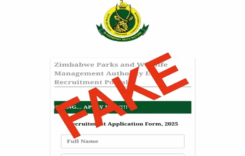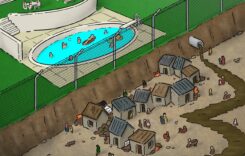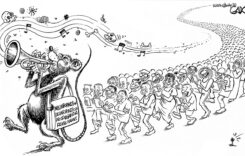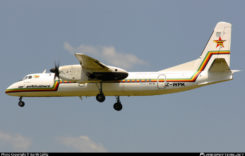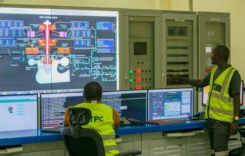DESPITE a protracted economic crisis which has decimated its social services and infrastructure, Zimbabwe’s education has retained its ranking among the best in Africa.
A recent report by the United Nations Educational, Scientific and Cultural Organisation put Zimbabwe’s adult literacy rate at 86,4 percent in 2015, ranked ninth place in Africa.
The World Economic Forum’s 2016 Global Information Technology Report here ranks Zimbabwe fourth in Africa, in terms of the quality of maths and science education. The country is only ranked behind Ivory Coast (number 1), Mauritius (2), and Tunisia in the quality of maths and science education.
The Zimbabwe Education System
The Zimbabwean education system is made up of two years of pre-primary school – referred to as Early Childhood Development (ECD), which is offered to children from the age of 3 to 5 years – seven years of primary school and four to six years of secondary education, followed by higher education in the college and university system.
In 2004, introduced a national ECD policy which requires primary schools to offer a minimum of two ECD classes for children before they enrol for Grade 1. From the age of four, every child has equal access to education in Zimbabwe.
The country’s school system is regulated through the Education Act of 1987. After independence in 1980, Zimbabwe introduced free compulsory primary and secondary education, holding education as a fundamental right.
This fundamental right was clearly supported by the Education Act of 1987. However, it is important to state that while the education system was meant to be entirely free in 1980, parents now pay fees to support budgets that come from the state which are largely inadequate.
Kindergartens, primary and secondary schools are usually run by the state, local authorities, religious organisations as well as private and independent trusts.
Enrolment in primary schools rising from nearly 620 000 in 1980 to 2,7 million pupils by 2014 (Zimstats). The number of primary schools more than doubled from just 2 401 in 1979 to 5 863 in 2014.

https://datawrapper.dwcdn.net/bNXcX/1/
The number of secondary schools increased from 177 in 1979 to 2 424 in 2014, and enrolment rose from 66215 to 979 644 in 2014.

https://datawrapper.dwcdn.net/0x6Dg/1/
Most of the primary schools, about 76 percent, are owned by rural district councils while the remainder is owned by church organisations and the government.
Primary and Secondary Education was allocated US$810.43 million about 20.3 percent of total budget, but 9.5 percent lower than 2015 allocation. Despite this, the 2016 allocation is higher than the Sub-Saharan Africa (SSA) average of 16.5 percent of state budget. Zimbabwe has a very competitive admissions process into high schools and university.
The Zimbabwe school system consists of:
- 9 years of elementary school
- 4 years of junior high school
- 2 years of senior high school and
- 4 years of university and more for post – graduate education.
How Do Zimbabwe Schools Operate?
Most schools operate on a three-term system with the first term running from January to March (or first week of April), second from May to July and the third from September to early December. Except for primary school, an average school day on weekdays lasts for 6 to 7 hours and even after the school ends, children still have drills and other homework to keep them busy. Vacations are 4 to 6 weeks. There is often homework during these vacations or extra lessons. In primary education, in most cases, one teacher teaches all of the subjects in each class. The number of students in one class is usually 50 or 60 depending on the school enrolment levels.
And, because of the rapid population growth, this number has increased to 60 in most cases per class for secondary schools. Nearly all schools, both primary and secondary, require their students to wear a school uniform.
What Do Children Learn in Zimbabwean Schools?
The Ministry of Primary and Secondary Education set 10 subjects as the maximum number that students would be required to sit for Ordinary Levels with 7 of them set as compulsory subjects. All students will have to sit for Maths, English Language, General Science, Indigenous Languages, Agriculture, Physical Education, Sport and Mass Display and Heritage Studies. Students who wish to write more than this can select from a list that includes subjects like Computer Science, Geography, Physics, Chemistry, Biology, Additional Mathematics, Pure Mathematics, Statistics, History, Commerce, Economics, Principles of Accounts, Design and Technology, Food Technology, Metal Technology and Design, Home Management and Design and Technical Graphics and Design.
An increasing number of schools have started teaching computers as well. Information technology has been used to further enhance education, and most urban schools have internet access while many in rural areas still lack this due to unavailability of electricity and equipment.
The country has vibrant sporting, arts and performance competitions largely sponsored by the private sector.
In public primary and secondary schools, fees are pegged by the Government at around $10 (for both urban and primary schools) and $50 for rural secondary while urban ones charge $60. Parents pay for other additional charges depending on the school.
In addition, state universities charge $550 on average or even more depending on the course, while private universities charge around $900 or slightly more.
Polytechnics and vocational Colleges cost an average of $200 per term.
Zimbabwe also has a number of independent or private schools with public funding for the salaries of teachers. Parents and their children can choose between public, mission/church or private schools. Private schools are often expensive and can charge anything from US$1 500 to $4000.
University Education
Since independence, Zimbabwe has committed a significant portion of the national budget towards the funding of education. As a result, Zimbabwe now has 13 state universities and seven private ones.
In addition to this, Zimbabwe has 13 polytechnics, 13 teachers’ colleges, 43 vocational training centres and up to 16 quasi-government and independent research institutions.

https://datawrapper.dwcdn.net/mCsNc/1/
Prior to independence, the University of Zimbabwe was the country’s sole university. It was founded in 1952 in the then Rhodesia (as the University College of Rhodesia and Nyasaland) and was set up by a special licence with the University of London.
The Ministry for Tertiary and Higher Education (TMTHE) is the custodian of post-secondary education in Zimbabwe.
Regulation
There are a number of statutory bodies that monitor and regulate the provision of higher education in Zimbabwe. These bodies address various issues including quality assurance, identification of training and research needs, representation of lecturing staff and monitoring occupational standards.
The most important statutory bodies responsible for higher education provision in Zimbabwe are:
- The Zimbabwe Council for Higher Education (ZIMCHE), which monitors and regulates the quality of qualifications being offered by private and public institutions of higher learning within the country;
- The National Manpower Advisory Council (NAMACO), which acts as an intermediary between industry and higher education and supervises the industrial committees that identify, determine and monitor training needs;
- The Zimbabwe Manpower Development Fund (ZIMDEF), which is responsible for levy collection, and supplements voted funds for the procurement of training materials and consumables;
- The College Lecturers Association of Zimbabwe (COLAZ), which represents lecturers in collective bargaining;
- The National Economic Consultative Forum, which recommends economic priority programmes including human capital development; and
- The Zimbabwe Occupational Standards Service (ZOSS), which carries out job profiling and develops occupational standards upon which technical and vocational education and training (TVET) curricula are based, and which form the basis upon which examinations, test items and trade tests are developed.
On average, every year, about 300 000 students sit for their O-level examinations and out of this number, about 30 000 proceed to A-level and another 20 000 enrol at tertiary institutions – for vocational, polytechnic and university education.
Experts say enrolment at the postgraduate level accounts for a very small proportion of the total enrolment in public universities in Zimbabwe. While there are more than 30 000 enrolments at undergraduate level in recent years, there are fewer than 4 000 students registered for masters’ degrees and fewer than 350 pursuing doctoral studies in Zimbabwean higher education institutions.
Recent reforms
The relevance of the Zimbabwe’s education system has come under immense scrutiny by educators, industrialists, policy makers, citizens and employers. Critics of the system argue that the studies are too focused on theory and altogether excludes areas of education that stimulate personal growth, patriotism, work ethic, morality and creativity.
They further say the education never prepared students for life and work.
In 2017, the Government adopted a new curriculum framework that is expected to run until 2022 and forms part of the implementation of the recommendations of the Nziramasanga Commission of Inquiry into Education and Training.
The framework is based on five pillars, namely the legal and regulatory framework, teacher capacity and development, teacher professional standards, infrastructure development and the establishment of a Centre for Education Research and Innovation and Development.
This new curriculum aims to promote competence and skills that should enable every learner to have an opportunity to develop their potential.
Significantly, the new curriculum aims to ensure a smooth transition from school to work through study of a whole range of subjects that include the sciences, technology, engineering and mathematics (STEM).
Zimbabwe is pressing ahead with the implementation of the new reforms to keep abreast with global trends and standards.
Early in 2018, the Government released US$9 million for the purchase of equipment and materials for marginalised schools to implement this programme.
The reforms aim to improve student’s results, the quality of teaching and the quality of the output that goes into the world of work. Greater emphasis is now on technical, engineering, art, mathematics and physical science.
Key milestones for Zimbabwe’s Education System
- The Zimbabwe National Statistics Agency’s labour force survey estimated that 97 percent of people over 15were literate in 2011. This figure is based on the percentage of people in this age group that had completed Grade 3 of schooling.
- The country’s 2011 Demographic and Health Surveyestimated that 96 percent of men aged 15 to 54 and 94 percent of women aged 15 to 49 were literate.
- UNESCO’s Institute for Statistics estimated that 83.6 percent of Zimbabweansaged 15 and older were literate in 2011. This estimation was based on Zimbabwe’s 2011 Demographic and Health Survey results
- In terms of enrolment, Zimbabwe boasts of almost 95 percent rate
- The country has the highest text book availability ratio in Africa, according to the UNDP (2018)
Fact sheet compiled by Sifelani Tsiko.
Do you want to use our content? Click Here


